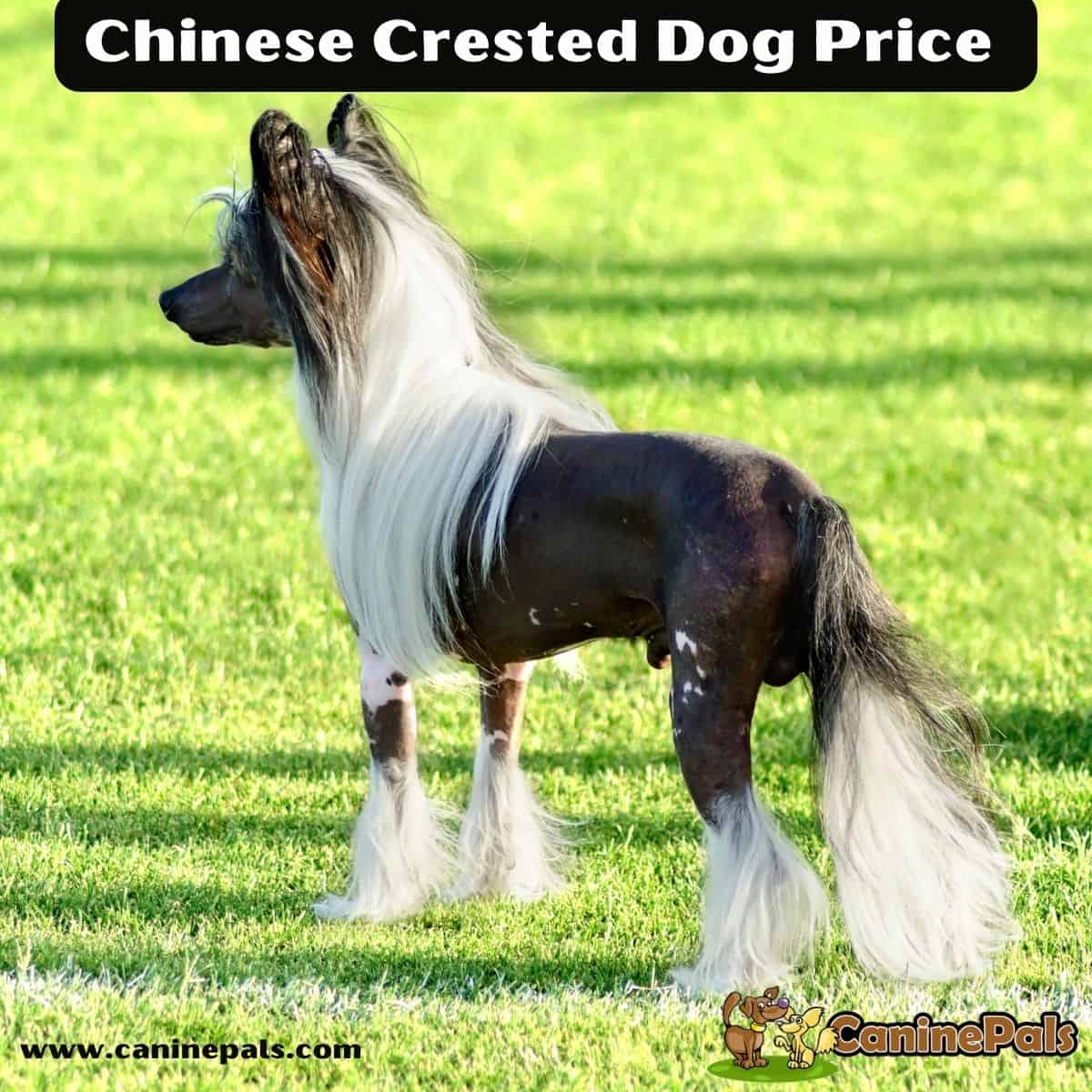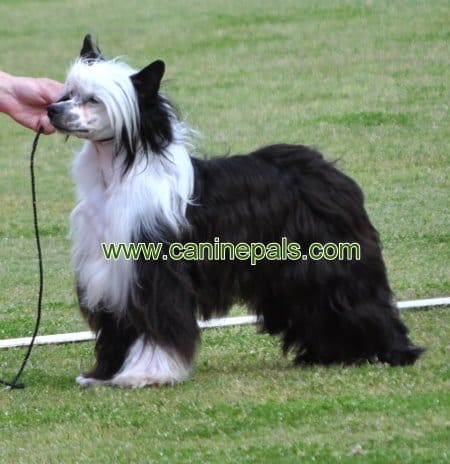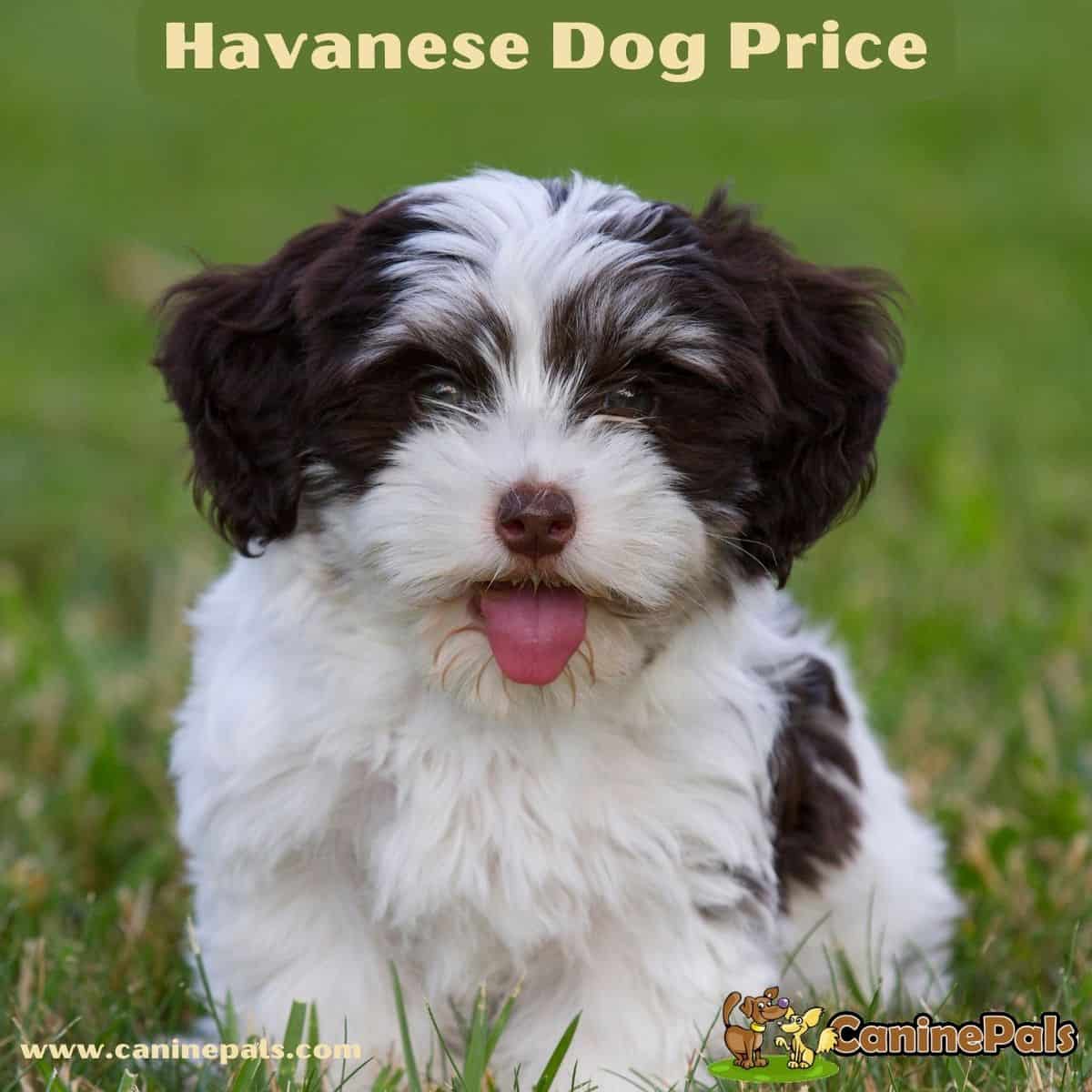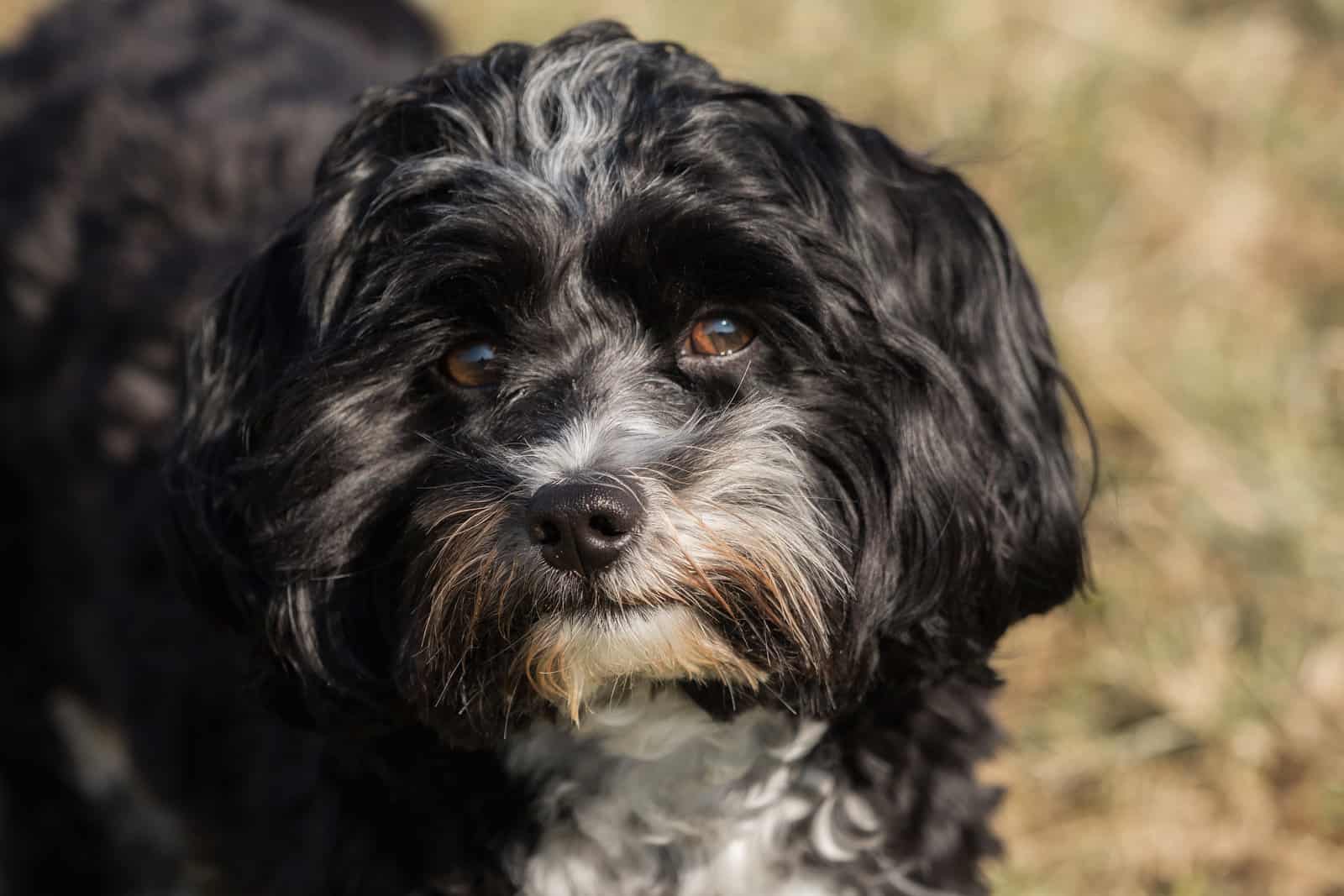Do you want to know the price of Chinese Crested puppies? This article explains this wonderful toy-sized dog breed and fully details the Chinese Crested price.
Suffering heartbreak or going through loneliness? Are you looking for a therapeutic pet who would instantly brighten up your mood and lift away all the bleaks and blahs? Think no more and get yourself the most vibrant, cheerful, and energetic fur-baby, the Chinese Crested. Of all toy breeds, the Chinese Crested dog is known for its liveliness and companionship traits.
It’s a compact-sized dog who finds ultimate happiness in pleasing his master and keeps roaming around, so you may get this toy dog only if you are ready to share your personal space. The Chinese crested dog is very physical and wants to be held a little more than other breeds, so they make the best lap dogs for maximum huddle and cuddle.
If the term puppy love had a face, it would be a Chinese Crested dog. They are also very attention-seeking and social dogs, so you may feel you have a pretty little toddler who constantly demands love and attention. However, unlike cats or other dog breeds, they prefer to reflect emotions big time and express as much affection towards their dog parents as they can. He’s a great pet, very playful, and gentle with children.
How Much are Chinese Crested Puppies?
Chinese Crested dog prices are on the higher end, and it is an expensive dog. You may adopt an adult; in such a case, a Chinese Crested would cost only $300. However, if you plan to buy a puppy, then the price of a Chinese Crested dog ranges from $1000 to $4000.
This fluctuation in the Chinese Crested price often confuses dog owners. The difference is rather in the quality of the breeder than the dog itself. Getting a Chinese Crested puppy from any next-door breeder may cost you $1200-$2200, but buying the same dog from a reputable and top-notch breeder would cost you around $3000-$4000 for a single Chinese Crested pup.
The average cost of a Chinese crested puppy depends on where you get it. Some common options to get a puppy from are;
Backyard breeders:
Often, people jump into the dog breeding business with little or no experience. They do not follow the proper breeding rules and, due to their inexperience, cause more harm than good. These people are called backyard breeders.
They sell puppies at relatively lower prices, but the quality of the breed remains questionable. Depending upon the reputation of the backyard breeder, the price of a Chinese crested dog would range from $800 to $1200.
Dog Shelters:
If you have a limited budget, you may contact dog shelters or adoption centers for dogs. They often have good-quality dogs and charge you only the amount they have spent on that particular dog after its admission to the adoption center. Chinese crested price in a dog shelter ranges from $300-$600 0nly.

Reputable Breeders:
You may expand your budget and contact a reputable breeder for a premium Chinese Crested puppy. These breeders take care of all the rules and regulations passed by AKC (American Kennel Club) and promote a healthy breeding culture. They may cost you a fortune, but their quality is worth the money. On average, a Chinese crested hairless dog from a reputable breeder would be somewhere between $3000 and $4000.
The cost quoted for Chinese Crested hairless dogs usually does not cover the shipping charges, so you may add those before estimating the total expense.

What are the other factors that may impact Chinese Crested Dog Price?
Several other factors may affect the price of Chinese crested dogs- let’s have a quick look and figure out the cost of owning a Chinese crested puppy.
Vaccinations:
Almost all dogs need vaccinations to prevent parvo, rabies, tick fever, and other dog-related viruses. Vaccination adds to the total cost, so if your selected breeder has already quoted you a high price, you may also ask him to cover the first round of vaccines at that cost.
Veterinarian Checkup and Health Issues:
After puppies are born, a vet must check them thoroughly to screen out possible genetic illnesses such as seizures, deafness, PRA (progressive retinal atrophy), patellar luxation, periodontal problems, and eye ailments. Covering medical checkup expenses would also add to the cost of the Chinese Cresteds.
Dog Breeder’s Reputation:
The breeder’s reputation is a major reason for the higher price of Chinese Crested dogs. The more a breeder’s name is worth, the higher the Chinese Crested will cost. However, reputable breeders cover vaccination and medical profile expenses in their final quote, a notable sign of their standard.

About the Chinese Crested Dog Breed
The Chinese Crested originated from China and some areas of South Africa in the early 1200s century. According to a popular impression, seamen used to keep these dogs on the ships as curios and often sold them to merchants in exchange for other goods. That is how they made it to other corners of the world.
The Chinese Crested has two types; the Hairless has silky, soft hair on his head, a plumed tail, and socks on his feet. He’s smooth wherever there’s no hair. The Powderpuff has a double coat of straight, soft hair. Both types can come from one litter. This dog used to sail with Chinese mariners and is thought to have descended from the African hairless dogs. When China had plagues, this dog used to hunt the vermin on ships.
In the late 1800s, the Chinese Crested dog appeared in American dog shows. He also appeared in European artwork in the mid-nineteenth century. Due to his lack of hair, the Chinese Crested dog gets more allergies, sunburn, and skin problems, so owners must take extra care.
First Look:
As its name suggests, the Crested variety has a beautiful crest of silky hair that runs from head to neck. Depending on the coat type, it comes in two distinct varieties: the hairless variety and the other full of hair, called the powderpuff variety. However, even the hairless Chinese Crested dog has hair around the head, toes, and tail. It has a fairy-tale character-like look, beautiful hair, a small stature, a lean, hairless body, and naturally upright ears.
Height and Weight:
The average height for a Chinese Crested male is 13 inches, whereas a female of the same breed can be 11 inches at max. Their weight ranges between 5-12 pounds for both male and female dogs.
Temperament:
Chinese Crested is a very vibrant and active breed. This lively and full-of-energy dog dares to keep its master on its toes, and you cannot even say no to its cutest pony-like expressions and innocent face. Chinese Crested dogs are harmless for children but are not recommended to be left unattended around toddlers or children because of their fragile bodies.
Trainability:
Pet parents may find this unique dog relatively hard to train, so it is better to hire professional help beforehand if you are adopting a grown-up Chinese Crested dog. If you are buying a puppy, you may need to learn tricks and techniques for taming your pup according to your house rules. Their ability to drool, bark, and dig is also at the lower extreme, so they are not hard to handle overall.
Care:
This small-size toy breed requires good maintenance of its smooth coat and silky hair. They are average shedders, provided the dog parent regularly brushes their coats and gives baths at least once a week.
Summers are their best friends, and they are prone to distress in case of cold. You may need to be extra cautious around them in winter. They cannot survive cold without wearing a sweater, so you may get one tailored to your fur brownie. Prolonged exposure to the sun can cause sunburns on hairless types of Chinese Crested dogs, therefore never forget to apply sunblock generously on your baby’s skin before going to the beach party.
Out of the two, the powder-puff Chinese crested requires extensive care and proper grooming due to the long coat. The hairless type requires minimal effort to be presentable because their coat naturally has a polished and refined look.
Life span:
The average lifespan of a Chinese Crested dog is 12 to 15 years. Most dog parents mark their years of having this dog as the most vibrant and lively days.
Activity level:
The Chinese Crested dog may appear fancy, but it’s a very millennial dog breed that does not require huge backyards or gardens for optimal growth. These dogs can adapt to apartment cultures quickly and make the best pets for people who have smaller living spaces. They do need indoor activities and up to 30 minutes of exercise daily to remain active.
Litter size:
The average litter size for a Chinese Crested dog is 2-5 puppies. A litter usually includes 3-4 puppies; however, two are also very common since it’s a small dog.
Is the Chinese Crested a High-Maintenance Dog?

Due to the high price of a Chinese Crested puppy, you may think it is a high-maintenance dog, but that is not true. This sweetest and most affectionate toy dog breed requires only subtle care and support for proper growth.
If you plan to show your dog, you may need to up your game. Otherwise, a balanced diet, daily walks, regular coat care, and a vet visit are good enough to keep a Chinese crested at its best.
Chinese Crested dogs love gentle games and indoor play, so you may need to spend quality time with your puppy as an owner. They are also known to be very sensitive and do not appreciate loud noises. In case of distress, they want to be held more often. However, holding them a lot can make them timid, nervous, or even antisocial in some cases, so be watchful of your dog’s behavior.
Chinese Crested dogs are not known for intelligence, so you may feel bad if your friend wants to discuss his pet’s wittiness; however, the two are incomparable. Chinese crested also make for it with compassion, loyalty, and desire to please their owner.

How to Take Care of a Chinese Crested Dog?
As a dog parent, you may want only the best for your fur baby, so here are some guidelines you can follow in the best interest of your Chinese-crested dog.
- Brush your dog’s coat every week with the help of a wooden comb of soft bristles and check for any ticks or fleas. Use medicated shampoos per the vet’s instructions to prevent skin diseases.
- The Chinese Crested have primitive mouths with canine-like teeth, so they brush them regularly to prevent periodontal diseases.
- If you have a hairless Chinese Crested dog, you may need to invest in good skincare cream and sunblock to avoid skin rashes or sunburns. These dogs have very delicate skin.
- Chinese Crested dogs emit heat but require warm clothing in winter, especially hairless dogs, so remember to layer them up.
- Like other small dogs, Chinese Crested loves a fresh, high-quality dog food diet and eats in small pieces. Meaty treats are their favorite, and they appreciate traditional kibbles. Serve your dog high-quality dog food for proper bone and muscle development.
- Overall, Chinese Crested dogs are fun-loving and energetic. They do not bug their owners and remain cooperative, so if you ever notice unusual behavior, immediately call the vet.
- Never skip routine vaccinations, pet insurance, and medical checkups. Maintaining a medical profile helps your pet achieve good health and increases the reselling price.
- Daily strolls and indoor activities are also necessary for Chinese Crested dogs. They are comfortable around strangers, so taking them out would be hassle-free.
- Chinese Crested dogs are susceptible to progressive movement disorders, so proper screening before buying or adopting a puppy is mandatory. Smaller dogs are also prone to bone fractures, so you may need to handle their movements. To avoid mishaps, restrain them from high jumps and do not encourage tough play.

Final Word on Chinese Crested Price:
When considering a Chinese Crested dog, it’s important to recognize that prices can differ greatly. Prices may fluctuate significantly depending on various factors, including the specific variety.
However, the most important aspect is connecting with responsible breeders. These breeders conduct comprehensive health testing on parent dogs, ensuring you get one of the healthiest dogs possible. In the United States, breeders associated with Chinese Crested communities are likely to follow international breed standards to minimize common health problems such as dental issues and Legg-Calve-Perthes disease.
Chinese Crested dogs, both the spirited Hairless and the soft-coated Powderpuff, are renowned for their affectionate nature and suitability as lap dogs. However, they do require regular care, especially the Hairless variety, to maintain the health of their skin.
Prospective owners should consider the cost of regular check-ups, emergency funds for health care, and the potential need for pet health insurance. Additionally, their grooming needs, though not extensive in coat care, often include skin care and protection against the elements during cooler months.
Whether you adopt from a rescue group or purchase from a breeder, understanding the unique needs of Chinese Crested dogs is crucial. These factors should be considered, from their specific nutritional requirements to their exercise and mental stimulation needs. While they may not need as much exercise as larger breeds, consistent training, positive reinforcement, and engaging puzzle toys are essential for their well-being.
Choosing the right breed means understanding the commitment required to ensure a fulfilling life for the dog and the owner. A Chinese Crested can be a great pet, particularly for those living in smaller spaces or families with young children, provided their unique needs are met. Whether searching through breeders and rescue groups or checking Chinese Crested puppy listings, ensure you are prepared for these delightful companion dogs’ first-year and ongoing monthly costs.
Copyright CaninePals.Com. All Rights Reserved.
References and Further Reading:


































 Pug Dog
Pug Dog















